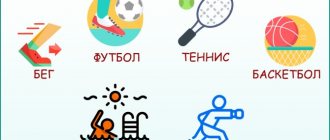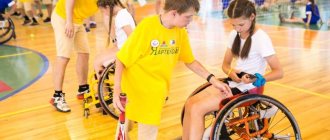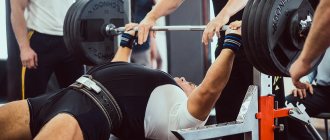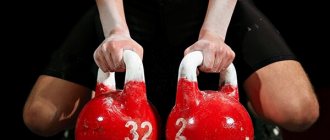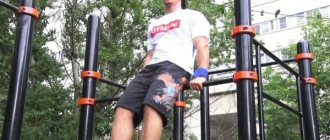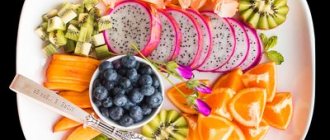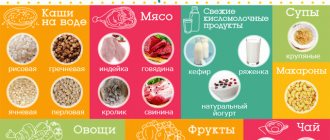Skis for weight loss
Since skiing is an excellent cardio exercise, it can help you lose extra pounds. To eliminate extra pounds, skating style running is suitable. The intense pace allows you to burn more calories than running cross-country. This happens because not only the legs, but also the arms are actively moving.
In just an hour of active training you can burn 600 calories. At the same time, fat will be burned and muscles will be strengthened, which will prevent the appearance of sagging skin and stretch marks.
To make fat burning as effective as possible, you should follow these recommendations:
— Work out about 3 times a week;
— The lesson should last at least an hour;
— You need to eat two hours before the start of training, and 60 minutes after it;
— The first training sessions should take place on level ground to thoroughly develop the sliding technique;
— The lesson should begin with warm-ups;
— You can’t suddenly give yourself heavy loads - not only will they not be useful, but they will also provoke malaise and poor health.
A number of mistakes can hinder weight loss:
- Fear of standing on one leg. A person will soon get tired and lose significantly fewer calories.
- Moving on straight legs. Almost all beginning skiers are afraid to bend their legs while skiing. It seems that level legs will provide some distance from the ground. But with straight legs, much fewer muscles are used, and in addition, such a movement will be more dangerous.
- Fear that my knees will cramp. It is also the fear of falling. The sliding time will be reduced and fat will be eliminated more slowly.
Skis: where to start?
If you decide to take up skiing, but you do not have the necessary knowledge about this sport, then below you will be given a small recommendation on how and where to start.
1. The first thing you need to do is select your skis individually . Of course, for amateurs this is not such a big deal, but it is better to exercise comfortably than to try to understand why you fall so often. Few people know, but skis are selected not by height, but by weight. The heavier the potential skier, the longer and stiffer they should be. It’s best to go to a specialized store to do this - they will pick you up skis, bindings, suitable shoes, and poles.
2. From school times, many remember that skis must be pre-lubricated before skiing. However, many modern skis glide well even without lubrication. In some cases, you will need a special ointment to prevent the ski from “shooting” when pushing off.
It is best to learn to ski on an already rolled ski track . There you will not need any special skills - all you need is to move your legs slightly and push off with sticks. It's important to start feeling confident on your skis before moving on to more advanced techniques.
A huge number of problems arise for beginners due to climbing uphill. For those who have never skied, it is quite difficult to imagine how they can go up anywhere at all. This is a really hard technique, but the main thing is enough practice. To climb uphill, you should put your foot on the edge of the ski and a “herringbone” manner, while pushing off with poles.
Skis for strengthening muscles
What muscles work when skiing? While skiing, almost all muscles are used: legs, thighs, arms, back and abdomen. If you ride regularly, they become elastic, resilient, and hardy.
It is important that muscles that are difficult to work out when going to the gym for fitness are actively involved. The lower abdominal and core muscles work actively. In addition, skiers have legs in perfect shape. When descending, the main loads fall on the legs and hips, the back and chest muscles act, which makes it possible to obtain good posture.
To maintain muscle tone between workouts, the load should be gradually increased over several weeks.
Skiing and its varieties
There are several types of skiing. The main ones are:
• Skate style;
• Classic style;
To begin with, you should master the classic style. When skiing in this style, as a rule, they use an already knurled ski track. Get on the ski track, bring your poles a little forward, and push off the ground with them. After this, try to slide along the plane, pushing off with one leg (the direction of the push should be downward, not backward). When you get comfortable with this, try pushing off with your legs alternately , while simultaneously bringing your opposite arm forward (left leg - right arm, and vice versa).
Skating style will be a little more difficult for beginners , but it is this method that conveys the whole atmosphere of winter skiing. You need to try to ride in the Latin letter “V”. At the same time, try to make it as narrow as possible. On one foot, slide forward and slightly to the side, while the other is placed on the inner edge of the ski and pushes you away. It looks like you can step one ski on the other, but in reality it is quite difficult. Almost all the time when riding this style, the legs are in different planes, and it is quite difficult for them to meet.
The skating style differs from the classic one in being more dynamic, and, therefore, it is more effective in terms of losing excess weight. The classic style is more suitable for beginners, as well as for older people who find it difficult to run at a fast pace. It is great for light walks and general health improvement.
Cardiovascular and respiratory system training
What are the health benefits of skiing? They help to harden the body and teach it to react normally to fluctuations in weather conditions. Blood flow and respiration are activated. When a person moves on skis, as with other body movements, the heart often contracts, the vessels become wider and blood can circulate through them faster. Breathing becomes frequent and deep, the blood receives more oxygen, moving it throughout the body. Signs of oxygen deficiency are eliminated, metabolism is enhanced with further removal of metabolic products (also called waste).
All these processes have a beneficial effect on the immune system, significantly strengthening it. People who ski rarely get infections, and if they do, the illness goes away without serious complications.
Interesting facts about skiing
Probably in every area you can find information that is unknown to a large number of people. There are interesting facts about skiing:
- Skis began to be used at a time when animal skins were used instead of clothing. This is proven by the found rock paintings.
- People who want to lose weight will be interested to know that in an hour's drive you can lose about 350-400 kcal.
- It is believed that skiing originated during the times of the ancient Scandinavians, and they had a patron deity of skiing - Ullom.
- Ski sports were first included in the Olympic Games in 1924, and then the Norwegian team took almost all the awards.
- The first skis for sports reached three meters in length.
- The pioneer of skiing in Switzerland was Arthur Conan Doyle.
Prevention of scoliosis
Of course, when scoliosis appears, the doctor will first prescribe physical therapy, determining the level of stress and type of sports activities. In many cases, swimming is prescribed; its effect cannot be challenged.
Avoid exercises that involve twisting or that increase the mobility of the vertebrae. Skiing also helps protect against scoliosis. Skiing on flat terrain can not only prevent scoliosis, but also complement therapeutic exercises after the disease manifests itself.
Before starting classes, consultation with a doctor is required - in certain stages of scoliosis, playing sports is contraindicated.
All about cross-country skiing
All about cross-country skiing
Cross-country skis are divided into two large classes: plastic and wooden. Plastic skis, in turn, are also divided into two large subclasses: skis with notches and skis with a smooth block (that is, the smooth middle part of the ski). Skis with a smooth block, in turn, are divided into two more subclasses - intended for the classic style of movement (when the skis move parallel to one another on the track) and the skating style, when the skier moves along a wide snowy road and his movements are similar to the movements of a speed skater.
Plastic skis with notches.
They are skis with notches (hooks, notches) in the middle part of the ski in the area of the ski boot. They are a very good fitness tool, but are practically not used by professional skiers. However, such skis are extremely popular in developed countries of Europe and America. Approximately half of all skis sold in Western countries are cut skis.
- Advantages
Skis with notches practically do not require holding ointment, and therefore are very convenient for inexperienced skiers who get on skis only occasionally and do not know the technique of applying ski ointments. However, in difficult sliding conditions (plus weather, icy ski tracks, etc.), the notches cannot cope with recoil, and holding ointment becomes necessary even on these skis.
- Flaws
Notches impair sliding not only backwards, but also, although to a lesser extent, forward. Therefore, all other things being equal, a skier on notched skis will move slower than on smooth skis. This is why notched skis are not used in skiing.
Plastic skis with a smooth last (middle part)
- Plastic skis with a smooth last (middle part), designed for a classic style of movement.
Such skis have a smooth surface in the middle part of the ski (that is, under the block), and in order for such skis to be able to move, they are lubricated in the middle part with ski wax, which prevents the skis from slipping back when pushed. There are a huge number of methods and options for lubricating skis, depending on the weather and the skier’s ambitions, but there are also several simple lubrication methods aimed at beginner skiers. As a rule, it is enough for a beginning skier to have a simple set of three cans of ski wax, a plastic scraper and a rubbing stopper.
- Plastic skis with a smooth last (middle part), designed for skating style of movement.
The skating style of movement requires a slightly higher level of training compared to the classical style. It is no coincidence that most people skiing in the forest use the classic style of movement - it is simpler, more democratic, and less demanding on the quality of preparation and the width of the ski run. At the same time, skate skis are usually 15 - 20 cm shorter than classic skis. Also on these skis, on the lower part, along the edges of the ski, there is a 1-2 mm edge for a more stable ride of the ski so that it does not slip to the side.
Ski bindings
Skis can be attached to boots using various devices of varying degrees of complexity, called bindings. The variety of fastenings can be divided into several types:
- simple
- soft
- semi-rigid
- hard
- mountain
Simple bindings were the first to appear; they can be found on hunting skis. They are a simple leather or fabric loop into which you can easily insert your felt boot. Soft fastenings are a development of simple ones. Another strap was added to the loop, covering the leg from behind, above the heel, and preventing the ski from slipping off the leg. Currently, such bindings are often installed on children's skis.
Semi-rigid fastenings - the leather loop is replaced with metal cheeks, into which the boot rests, held on top by a sling. Instead of a belt, a cable is used - a metal spring. The cable is tensioned using a small lever, which is attached in front of the cheeks. All three types of mounts listed do not require special shoes, are reliable and easy to use. Semi-rigid mounts have been in service in the armies of various countries for a long time. Also, semi-rigid bindings were used in skiing and jumping in the early stages, before the advent of modern ski bindings and boots.
Rigid bindings - when using them, the boot is “tightly” connected with the toe to the skis, which allows for better control over them. It is rigid fastenings that are now widely used. Currently, three fastening systems are produced - Nordic 75 (familiar to everyone in the USSR), SNS, NNN and its new version NIS.
Ski bindings - these specific bindings completely fix the boot relative to the ski, which is necessary for control at high speeds developed by athletes when descending from the mountains. A characteristic feature of these fastenings is the ability to release the boot under critical loads in order to protect a person from serious injuries and fractures.
In addition to these main varieties, there are rare variants:
Telemark ski bindings are similar to alpine ski bindings and have specific properties necessary for telemark skiing.
Skitour bindings are an intermediate option between rigid and alpine ski bindings; they allow you to move comfortably on the plain, while the boot is attached to the ski only with the toe, and also provide the ability to fix the heel for the ski slopes. They have the ability to release the boot under critical loads, just like alpine ski boots.
Jumping bindings are a modification of bindings for jumping sports.
Cross-country ski bindings
Currently (2011), three main types of cross-country ski bindings are produced: ROTTEFELLA (NNN system and its new version NIS), SALOMON (SNS system) and Nordic 75 (familiar to everyone in the USSR). The first two types of bindings are mainly intended for competitive skiers, but are currently also used by amateurs. The boot fastening systems for SALOMON and ROTTEFELLA bindings are practically the same in appearance and in the method of fastening - in both types of bindings, the boot is secured to a bracket in the toe.
NNN
NNN (English: New Nordic Norm) is a cross-country ski binding system developed by the Norwegian company ROTTEFELLA. In the front part of the NNN system fastenings there are rubber stops, into which the toe of the boot rests when pushed. Depending on the rigidity of the rubber band, the rigidity of ski control is adjusted, so for different skiing styles, rubber bands of different stiffness are used. The NNN and SNS cross-country ski bindings differ in the boot guides along the bindings. SNS has one central protrusion, and NNN has two parallel ones. In addition, the boot fastening system is slightly different - with SNS bindings the boot bracket is fixed directly in the toe of the boot, while with NNN bindings it is moved 10 mm back, under the toes, which gives slightly better control of the ski during skating.
NIS
NIS (Nordic Integrated System) is a cross-country ski binding system developed by Rossignol, Madshus, Rottefella, and Alpina in January 2005. This is the latest version of the NNN system. This system involves a board factory attached to the surface of the ski. This ensures ease of installation of the fastening and the possibility of its longitudinal shift. NIS bindings and boots are fully compatible with the NNN standard.
SNS
SNS (Salomon Nordic System) is a cross-country ski binding system developed by the French company SALOMON. In the front part of the SNS system fastenings there are rubber stops, into which the toe of the boot rests when pushed. Depending on the rigidity of the rubber band, the rigidity of ski control is adjusted, so for different skiing styles, rubber bands of different stiffness are used. The modern Salomon Pilot binding system has two metal brackets for fixation, at distances of 10 and 35 mm from the toe of the boot, which allows for much better control of the ski. Cross-country ski bindings of the SNS and NNN systems differ in the boot guides along the bindings. SNS has one central protrusion, and NNN has two parallel ones.
Nordic 75
Nordic 75 (English Nordic Norm 75 mm) (Welt system) is a system of cross-country ski fastenings, familiar to everyone in the USSR. The Nordic 75 system sometimes uses a locking thrust bearing. One of the advantages of the binding is the lower position of the skier’s center of gravity (especially compared to SNS). Modern skis use various types of plastic, wood, composite materials, and alloys. Some plastic materials have properties that are useful for skis - they do not get wet, snow does not stick to them, and glide is better. Ski waxes are used to care for the sliding surface of skis.
Sliding lubrication
Used to improve the sliding properties of skis. For classic skis, only the front and rear parts are coated, and the block (under the binding) of the ski is coated with grip lubricant. Skate skis are coated over the entire sliding surface. Glide lubricants come in different types. These are mainly paraffins (applied to the sliding surface of the ski in a thin layer using a special iron), and in professional sports they also use fluoride accelerators (powdered or compressed), emulsions, pastes, sprays, gels.
Holding lubrication
Holding ointments serve to reduce recoil. It is applied to the central part (block) of the ski.
There are two types of holding ointments:
- solid (in jars);
- liquid or klister (in tubes).
The holding ointment must satisfy two requirements. First, the ointment should allow you to push. When pushing under the block, additional pressure is created on the snow, and snow crystals enter the layer of holding ointment, the ski “sticks” to the snow, which allows you to push. After the push, the crystals should come out of the ointment, allowing the ski to glide. When a skier glides on one ski, pressure under the block is also present, but the ointment should allow him to glide on one ski and “brake” only at the moment of push.
Some problems that arise under certain weather conditions:
- Podlip. At transition temperatures (about 0 degrees) and when it is fresh, especially when falling, the snow will stick to the ointment and turn into a thick snowball under the block.
- Icing (freezing) of the ointment. At negative temperatures (usually at transition temperatures from −2 to 0 °C, but it also happens at −25 °C), “icing” of the ointment may begin - snow crystals, instead of completely leaving the ointment layer after a shock, begin to break off, leaving tips in the ointment, and an ice crust appears on its surface. More often this is due to the fact that the ointment is softer (warmer) than necessary. This can also happen when the skis are even warmer than the surrounding air.
- Braking. The condition of the snow in and outside the ski track can be different, so the ointment that allowed you to roll normally in the ski track can greatly slow you down when exiting it. You can also feel the difference in grip and glide when riding in sunny areas and in the shade, such as in a forest.
Currently, for comfortable skiing on plastic skis, you need to be able to choose the right ski wax or ointments, as well as apply them correctly to the skis. Each ski wax is applicable at a certain temperature, and if applied incorrectly, it will quickly rub off on the snow or even slow down your movement. In professional sports, special multi-stage technologies for applying ointments are used; ski ointments themselves are also a rather expensive product of long-term research.
How to choose the right skis?
So, with a wide variety of models in the sports industry market, the question “Which skis to choose?” can really take an inexperienced buyer by surprise. But let's first try to divide all the skis by the type of material from which they are made: it turns out that plastic models share the market with wooden ones.
The advantages of plastic skis are that they are lighter and suitable for high-speed tracks and mountain serpentines. Plastic skis are perfect if you live in a non-mountainous area and need to travel to another city to ski - your luggage should be light. It is better to choose plastic even if your skating style is based on the so-called “skating” stroke. And the main advantage of plastic is that such skis do not have to be lubricated and they will go perfectly even on melted snow, since they have higher cross-country ability. Professionals, when giving advice on how to choose the right skis, if they opt for plastic skis, then they focus on a model that is equipped with a corrugated surface, but the first time you ski, you will have to get used to this feature.
Wooden skis will cost you much less, and before you go on the slope, the skis will have to be properly tarred - all this is done to increase their durability and service life. Any ski wax will be suitable for this purpose, but before the first ski rental you should make sure that it is completely absorbed and that the surface of the skis is streak-free and dry. If you need skis for running, if you plan to do the usual summer cross-country skiing in winter, then you should choose plastic skis. On the forums in the topic “How to choose cross-country skis”, you can get acquainted with different types of skis, find out the opinions of people who have already tried several types of skis and finally found the perfect pair. Lightweight and durable, allowing you to move more maneuverably along the ski track and create it yourself - plastic ski options remain ideal for running.
How to choose skis according to your height?
This question is no less important than the question of the durability of the skis, because if you choose the wrong size, then skiing from pleasure can easily turn into torture. The first way to choose skis by height is mathematically verified: take the height of the skier and add ten to fifteen centimeters to the given height. The second method is more suitable for choosing skis in a store: you just need to extend your hand forward and subtract ten centimeters from this length. If you are choosing your first skis, then you should choose a shorter option, because this will make it easier for you to master the basic elements of walking at first.
How to choose skis for a child?
An equally difficult question: “How to choose skis for a child?” Here you should pay attention to the degree of stiffness of the skis - their ability to grip the snow and the comfort of your baby will depend on this. Make a choice in favor of thinner or medium-width skis - this will make it easier for your child to make turns, as the skis will respond more steadfastly to body tilts.
Strengthening joints
At first glance, it looks incomprehensible, but the load on the knee and hip joints during skiing is not as strong as when walking. It's all about sliding and additional supports in the form of clubs: the pressure on the spine area and on all groups of joints will be insignificant, the person will take a small number of steps, and the effect of the mass on the leg area is reduced.
That’s why experts advise patients with arthrosis to ski. Overweight people will also be able to engage in this sport without fear.
Ski walking is allowed for patients with arthrosis of the hip joints of 1st and 2nd degree.
If you have problems with your knee joints, orthopedists do not recommend giving up movement. In this way, the condition of the joints can be improved by receiving nutrition from the bloodstream of nearby muscles.
Experts have long noted that practicing this sport stimulates the muscle framework, accelerates metabolism in the joints, preventing their aging.
What types of skis are there and how do they differ from each other?
There are the following types of skis: mountain and cross-country. The first, as you might guess, are intended for riding on snowy slopes, while the second are needed for driving on a flat surface. In turn, alpine and cross-country skiing have their own classifications, which include more narrowly focused types of skis.
Cross-country skis: what are they for and what are they?
Generally speaking, these skis are suitable for riding on flat terrain. How do cross-country skis differ in purpose?
- Speed – for athletes and speed lovers;
- Walking – for skiing in a park or forest;
- Tourist - for hunters, fishermen and tourists who travel off-road.
As for the styles of cross-country skiing, there are only two of them: skate and classic - each of them requires the appropriate type of sports equipment.
The skating style of skating has a telling name: when riding this way, the athlete looks like a speed skater. Skating requires a wide track, as the skier pushes off the surface with the inside of the ski, alternating legs, thereby taking up more space. Skis for this style are shorter than classic ones and have a small gap in the middle - this design allows you to increase the efficiency of the push, which is necessary, for example, when climbing a slope.
What is the difference between classic skis and skate skis? This style of skiing involves riding on a special flat track, in which the skis are located parallel to each other. Long, soft skis with a pointed tip are needed here.
How can skiing harm the body?
Skiing can not only be beneficial, but also harm the body. This can happen if a completely unprepared or sick person rides.
In particular, you should pay attention to the condition of the blood vessels. If you are diagnosed with varicose veins - unhealthy stretching of blood vessels, then you will no longer be able to ride. Even those who attended training in unsuitable equipment suffer from it (we are talking about buying high-quality compression underwear that prevents pathological stretching of blood vessels).
It is important to know that even after a common cold, at least 10 days must pass.
Beginners should start training with simple sections of terrain, otherwise there will be a high risk of injury. It’s good if everything ends with a few bruises and abrasions. But by neglecting your own safety, you can get sprains, dislocations or fractures of the limbs; the spine and neck area also remains at risk.
Skiing styles: there are plenty to choose from
Of course, the style of skating is comprehended and honed over time; training in all schools without exception is conducted from simple to complex. However, knowing about all the existing areas of alpine skiing, it is possible at each stage of training to set more specific goals for yourself, to strive for something specific.
Let's look at the main ski styles.
1. Sports skating. Subtypes: downhill, slalom, giant slalom, freestyle. Skating here is carried out on prepared tracks and includes a competitive effect: completing a section against the clock and without mistakes in technique. The obstacles on the descent are, in fact, the track itself with boundaries marked by flags, as well as all kinds of gates, mini-jumps and other obstacles that must be overcome according to established rules. To practice competitive skating, you need to practice regularly and have extensive experience.
2. Freeride. Extreme style of skiing on unprepared trails. This type of competition, in addition to speed descent, necessarily includes elements of a spectacular show: jumps, flips, approaches, jumps, etc. It is designed for exclusively experienced extreme skiers and the use of special skis.
3. Fancarve, or extreme carving. The main feature is skiing on very large skis (160-170 cm) with deep side cutouts, which gives the skier the opportunity to make extremely small radius turns at enormous speed without losing it. Competitions are held on carefully prepared tracks - steep slopes. Thanks to the unique design of the skis, which literally “does everything itself,” even an inexperienced beginner can try himself in funcarving, but becoming a real professional, fully controlling the behavior of the skis, is possible only for the most persistent athletes with regular training.
4. Newschool. The new school of one of the subtypes of popular sports skating - freestyle, includes interspersed techniques of snowboarding, freeride, intricate jumps, approaches and other acrobatic tricks. Requires special types of skis and excellent sports training, not suitable for beginners and amateurs.
5. Mogul. It literally means moving over rough terrain and overcoming obstacles (pits, potholes, bumps) at enormous speed. It has an impressive number of followers, although competitions in this style are rarely held in its pure form: usually the program is diluted with other types of skating. Mogul technique is intended for expert skiers with perfectly honed skills and high levels of physical endurance.
Contraindications for skiing
Despite the great benefits, skiing in some cases can cause harm to the body. By themselves, they do not have a negative impact, but you should pay attention to the list of contraindications:
— Disability;
— Serious heart or respiratory diseases;
— Severe pathologies of the musculoskeletal system or problems with the spine;
- During pregnancy and breastfeeding;
- Weakness of joints and immune system.
- Any recent illness or surgery.
If there are no contraindications, skiing will benefit all people, helping to strengthen their tone in cold weather.
Where to start classes
First you will need to find a ski resort where you can practice this sport. You will need the help of an instructor, he will be able to explain mistakes and teach the basics. It is best to go to the USA or one of the European countries, there are a huge number of ski schools with teachers. But for this you need to be fluent in a foreign language.
If you want to learn without outside help, first of all you will need to select equipment. To begin with, it is better to rent everything you need, this will save money if this sport is not to your liking. You will need skis, bindings, poles, goggles and clothing.
You need to start training with walking, if everything starts to work out, you can gradually increase the pace of movement. At first, you should give preference to smooth routes without sharp descents and turns, this will prevent possible injuries and damage. If you do not want to seek help from a coach or instructor, it is recommended to take relatives or friends with you who can provide backup or help.
Who, how and how many times can practice skiing?
One of the important nuances of skiing is proper breathing: deep and rhythmic, exclusively through the nose. Exhalations should be intense to improve ventilation. A child can be put on skis after he has begun to confidently stand on his feet (after the second year of life). Classes help strengthen the muscle corset, increasing endurance, coordination of movements, and improving balance skills. Moreover, during training, character develops - the little athlete makes decisions, achieves goals, gaining confidence in his abilities.
After 6 years, you can send children to clubs - perhaps they will grow up to be professional athletes.
Older people can practice skiing for themselves, it will be useful. The main thing is knowledge and compliance with the rules.
As a rule, they train 3-4 times a week under favorable weather conditions. Minimum lesson time is 1 hour.
Types of skiing
As already mentioned, the presented sports direction is considered the most popular. The main types of skiing and their brief characteristics:
- Ski race
. This is a cyclical sport that involves racing over different distances. These include: time trial, mass start, pursuit and others. - Skiing
. The descent from the mountain takes place along a specific route, which is marked by a special gate. The duration of the course, the height jumps and the number of gates are always clearly defined. There are different types of skiing: slalom, super-G, giant slalom, downhill and so on. - Ski jumping
. This sport uses special wing skis that help the athlete, once off the ground, to regulate his flight. - Nordic combined
. This course combines ski jumping (2 attempts) and a 15 km race. - Snowboard
. This skiing sport involves performing exercises on one ski, which is called a “snow board”. There are several types: giant and parallel slalom, snowboard cross and others. - Freestyle
. This direction involves performing various tricks and jumps. There are several disciplines: ski acrobatics, moguls, ski cross and halfpipe.
What load to choose for skiing?
For skiers who do not have sufficient experience, children under 10 years old and older people, it is better to put technique and speed into the background and choose walks at a calm pace. It is important to work with an instructor to become familiar with all the intricacies of the sport. There is no need to put heavy strain on the heart - the heartbeat should be at the level of 160-180 beats: for untrained people this will be dangerous.
The limit frequency is determined according to the formula 220 - number of years, which means that at 40 years old the pulse should not exceed 220-40 = 180 beats/min.
Skiing is a means for active development of the body
Correct selection of skis
Choosing skis is not such an easy procedure. Many factors will need to be taken into account. These include:
- Height and weight of the athlete.
- Riding style.
- Age and skills of the person.
The length depends quite a lot on the height of the athlete. This indicator significantly affects the speed and comfort of riding. The weight also needs to be selected correctly; rigidity will depend on it.
The optimal length of the ski track for a classic run is the athlete’s height plus 15 cm. For running, you need to add about 20 cm to your height. It is recommended to try the skis in action before purchasing.
Skis for children
This sport is also extremely useful in childhood. It allows you to strengthen the immune system, develop a physique, and get rid of negativity. In addition, the child will spend a lot of time in the fresh mountain air.
At what age to start
The recommended age for children to start skiing training is 3-4 years. This will allow the child to develop excellent muscles and immunity, and will also have a chance to succeed in this sport. Professional instructors start recruiting at age 3, but if there are concerns that this is too early, it would be better to hold off. You can also start at the age of 5, the main thing is that the child enjoys this activity.
Harm or benefit for the baby
Skiing will allow children to strengthen their immunity and protect them from various diseases. The functioning of the heart, lungs and other organs improves. The child's strength and endurance increases significantly. A walk will help you take your mind off various problems and strengthen your psyche. Skiing exercise is recommended by many professional psychologists.
Contraindications are the same as for adults. But you need to take into account that the baby may have a weak immune system, so it is better not to start training in very cold weather, otherwise it can cause harm to health.
Skiing is a great activity for people of all ages. Skiing provides health benefits that are unmatched by any other sport. The main thing is to follow safety measures and wear protective equipment. Also, you should not engage in this activity if there are contraindications.
How to choose skis, boots and poles for classic skiing
Skis
Classic skis (designated Classic or Cl) are longer than skate skis, have a sharp toe and a soft last. There may be notches under the block (designated TR) that prevent slipping during repulsion. On the left is a ski with notches, on the right - without.
andrewskurka.com
If the ski does not have notches (designation WAX), a special ointment provides an anti-slip effect. However, it will be quite difficult for beginners to apply it correctly, so a ski with serrations will be the best option.
To choose the size of classic skis, add 20 cm to your height or simply raise your hand: the lowered palm of your outstretched arm should touch the top of the ski.
It is also worth paying attention to the stiffness of the skis. First, determine the center of gravity: place the ski on your hand so that both ends are in balance. Then fold the skis with the sliding side towards each other and squeeze with one hand 3 cm below the found center of balance. There will be a distance of 1–1.5 mm between skis of suitable stiffness.
What to buy
- Skis Nordway XC Tour, 2,999 rubles →
- Women's skis Nordway XC Bliss, 1,599 rubles →
- Junior skis Madshus CT-90 Jr XС, 1,899 rubles →
Boots
Boots for classic skis are low and soft, without special inserts to secure the foot.
You shouldn't buy boots back to back. If your big toe rests on the toe of the shoe, your foot will quickly freeze. Better take boots half a size larger.
What to buy
- Children's ski boots Fischer XJ Sprint, 4,999 rubles →
- Women's ski boots Fischer XC Comfort my style, 6,999 rubles →
- Men's ski boots Salomon Escape 7 Prolink, 8,499 rubles →
